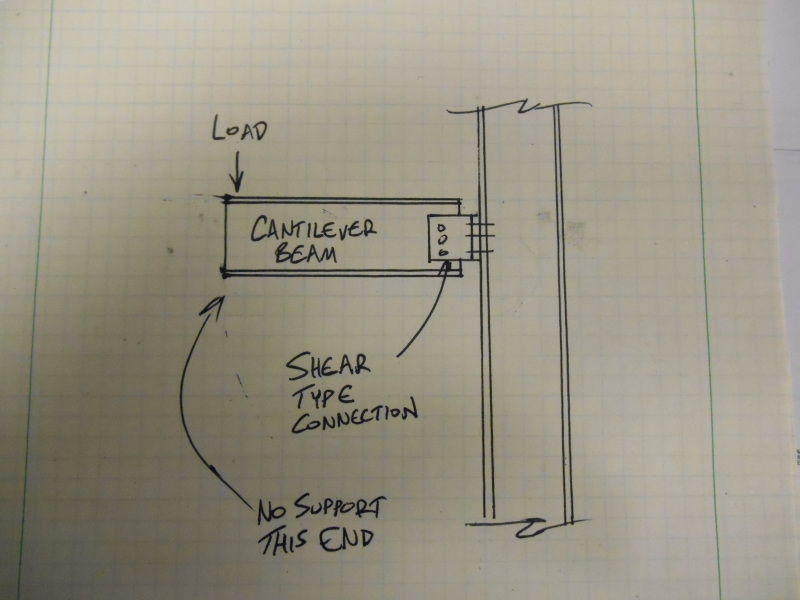shaneelliss
Structural
- Oct 15, 2007
- 109
If the numbers work out, would you ever use a shear connection to support a cantilever beam? In other words, would you be comfortable using something like a single angle three bolt shear type connection to support the "fixed" end of a cantilever steel beam if it is lightly loaded and the calculations show that the force couple on the shear bolts is low enough to work out?
I wouldn't use this type of connection, but I am working with an engineer who wants to do it and I don't know if I am being too critical in telling him that it is a stupid idea. I always hesitate to tell another engineer that their ideas are bad, because deep down I wonder if maybe they are smarter than me and I am being closed minded to an adequate solution.
So what do you think? Pinned cantilever ok or not?
I wouldn't use this type of connection, but I am working with an engineer who wants to do it and I don't know if I am being too critical in telling him that it is a stupid idea. I always hesitate to tell another engineer that their ideas are bad, because deep down I wonder if maybe they are smarter than me and I am being closed minded to an adequate solution.
So what do you think? Pinned cantilever ok or not?

